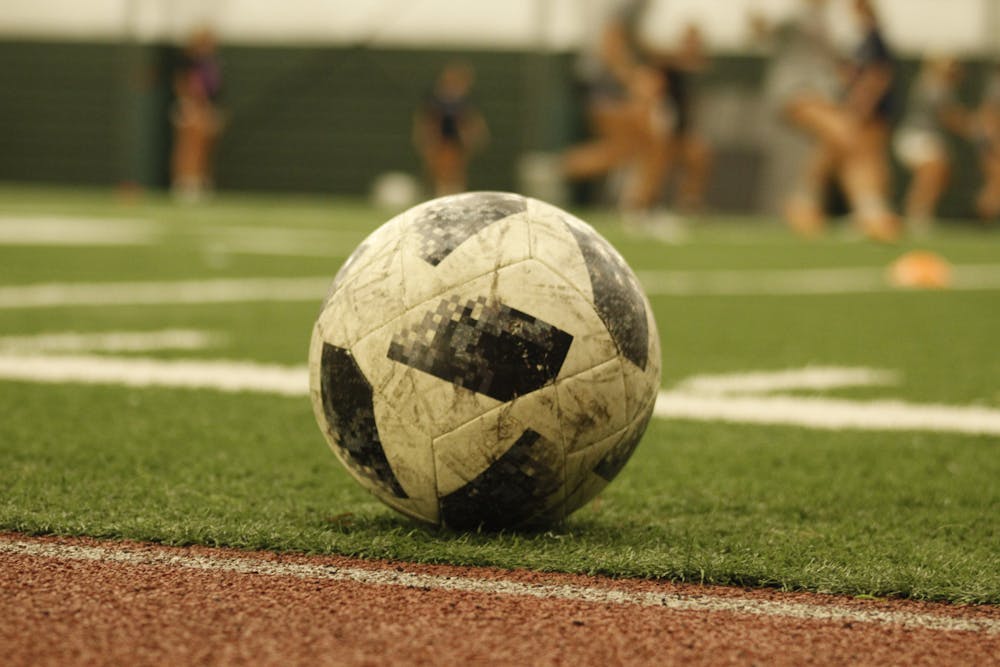Upon coming to college, many retired high school athletes find a home in club sports, a lively middle ground between recruited collegiate sports and casual intermural games. Funded by the competitive sports office at Ohio University and team dues, club sports offer a continuation of school sports for enthusiastic student-athletes.
Alex Gebers, assistant director of competitive sports and community programming, said the competitive sports office distributes approximately $48,000 between 31 club sports teams – each team receiving around $1,500 – to help enhance the sports program.
He said to determine what part of that $48,000 the club gets, factors from the year before influence that fund, including on-time completion of required forms, community service hours and attendance at student advancement series events.
“The allocation process takes these variables into account, ensuring that clubs' funding reflects their unique needs and operational requirements,” Gerbers said in an email.
Gebers said club members contribute to their club dues, which pool into a collective fund. Dues vary depending on the club, and fundraising efforts help offset due costs.
However, the Division One men’s club hockey team does not require its players to pay to be on the team; the team has a different route to receiving more revenue.
In the past two years, the men's division one hockey club team received approximately $120,000 in operational expenses from home ticket sales, retail, sponsorship support and fundraising provided through the Blue Line Boosters Club or donation contributions made through the program’s foundation accounts, Wes Bondadio, director of well-being and recreation, said.
Bonadio said funding efforts are unique to each club and there is a history of clubs generating revenue through ticket sales, which is at the discretion of each club. The club sports administrative team is also available to assist each club in generating strategies to help bolster their resources, he said.
OU also does not cover travel and equipment fees for any club team, Gerbers said.
Addie Sandru, a senior majoring in health and physical education, is the women’s club soccer president, and she said she’s responsible for getting any new equipment or merchandise for the team.
“We have to pay for uniforms if we want to get new ones, and we have to pay for all the equipment we get,” Sandru said.
However, teams get reimbursed for gas prices but only if the team is traveling together and not separately, she said.
Club sports teams are student-led, so coaches are typically volunteers or a collective student effort unless the club decides to use its own money to pay a coach, Sandru said.
Lional Mauron, head coach of the division one men’s club hockey team, said he is a full-time employee and is paid through Campus Recreation. Despite being the head hockey coach, Mauron also handles all the operations behind the hockey program, including managing the team’s financial account.
“The DI hockey budget is self-supporting to the point where the operational expenses are covered by revenue generated to support the team,” Bonadio wrote in an email. “The club sports funding is a centralized allocation provided by the department, which is distributed annually to each club according to their operational needs and compliance with administrative requirements.”
If the school was able to put more money aside for clubs, teams might be able to replace things like equipment, building maintenance and fields and be able to travel more.
Mauron said if the club administrative team put more money into the hockey team, then he would want to utilize the money to make Bird Arena, 102 Oxbow Traill, nicer and more accessible. Sandru shared a similar sentiment and said she would put money toward a new speaker, uniforms and soccer balls.
“If we put more funding toward (club sports), then more people would maybe want to participate in it … but I think people would be more enthusiastic about doing it,” Sandru said.






